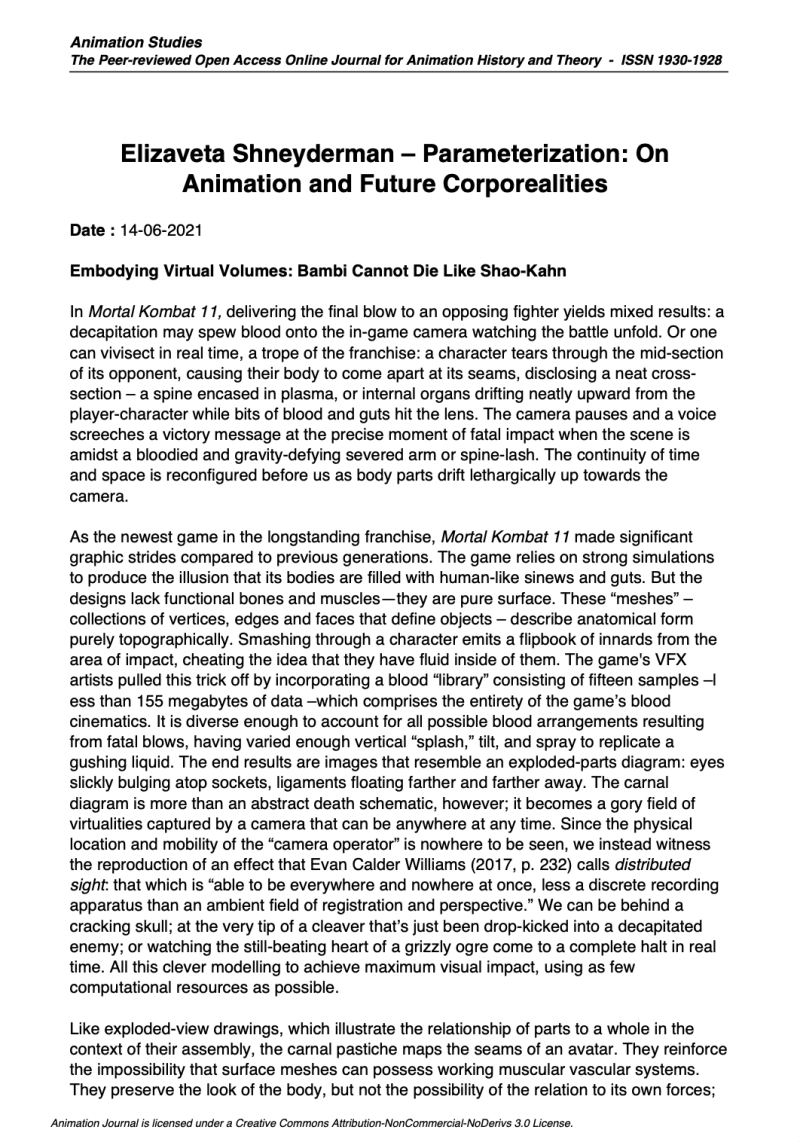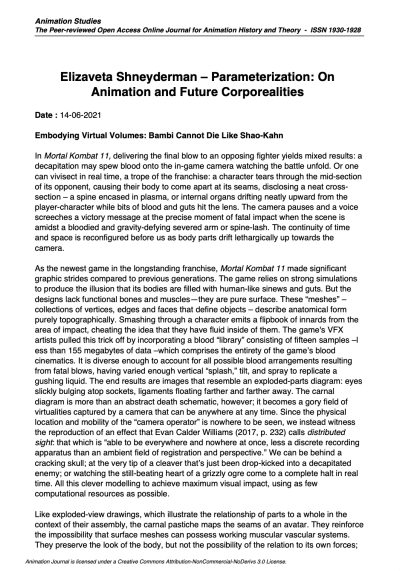Abstract:
Modes of bodily experience have become an increasingly central aspect of global visual culture over the past three decades. These newer forms of visuality constitute distinct content—relations between images and the corporeal experiences of their viewer/navigators. The anagrammatic, recombinant features of software toolkits and libraries create a novel form of realism which emerges out of their parameterization, characterized by a familiarization of the uncanny, or a sense of “already-seenness.” That is, digital bodies are made from sets of parameters derived from the codification and quantification of “real-world” physics. Articulating a theory of the “parametrized subject” as emerging from novel forms of corporality, this article seeks to investigate the basic processes of the construction and modularity modelled out of digital graphics and animation. This new visual paradigm constitutes technical images and engenders unlikely configurations of our capacities for vision, developing new modes of relating to visuality and to our bodies.
Using Mortal Kombat 11 as a primary reference, and surveying a wide range of historical and technical procedures of image making—from early twentieth-century rotoscoping to contemporary character modelling and rigging—this article offers a novel approach to how bodies have been rendered in animation and CGI, as well as a meditation on what these changes in images of bodies might offer to an understanding of corporeal experience.
Keywords: Animation, computer graphics, digital images, film studies, games, game theory, imaging, model animation, phenomenology

